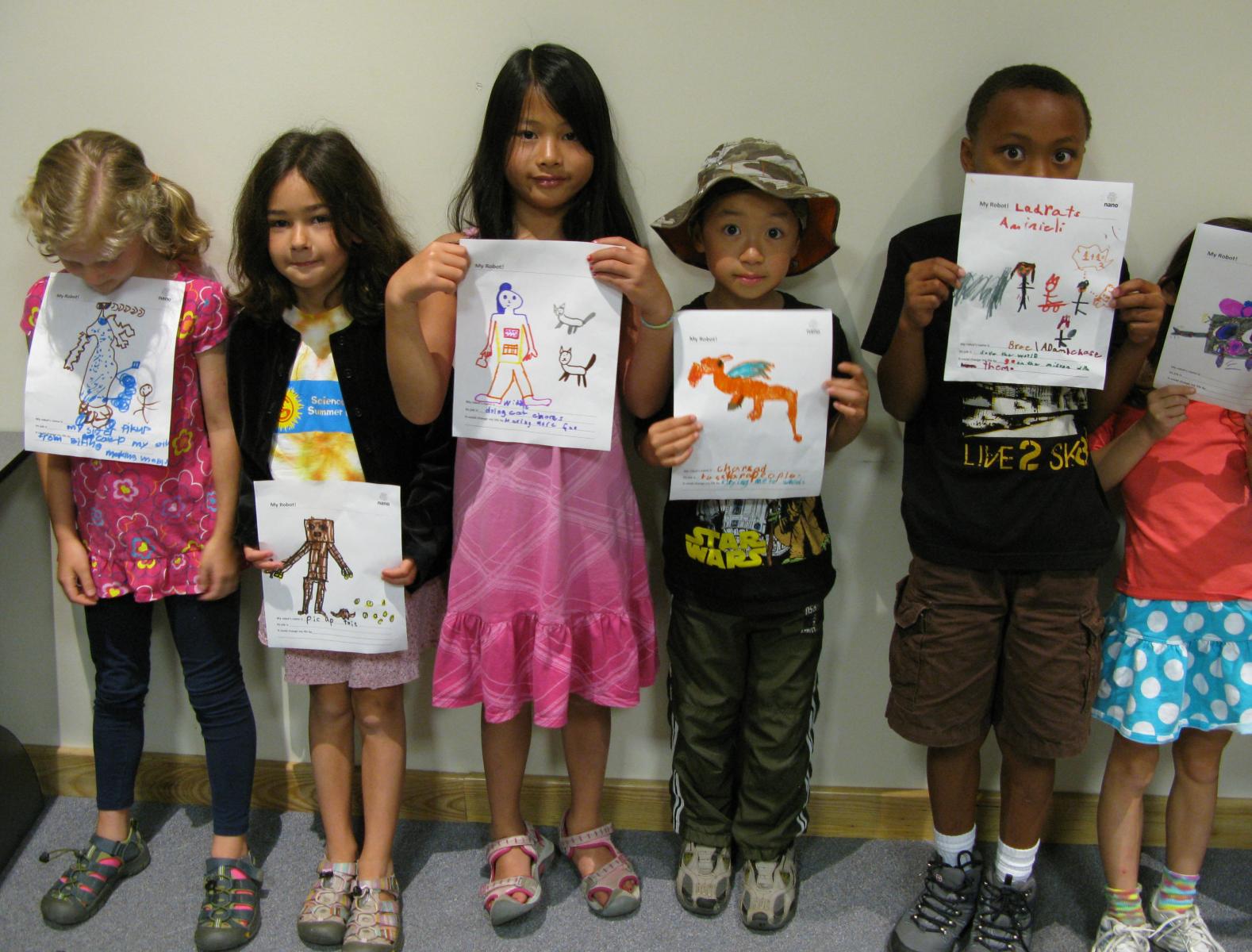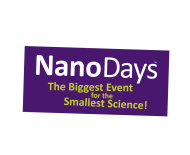DESCRIPTION
In the first part of the "Robots & People" program, visitors learn what robots and nanobots are, what they can do, and how they affect our lives. In the second part of the program, visitors imagine and draw a robot, designing it to do a particular task.
DESCRIPTION
In the first part of the "Robots & People" program, visitors learn what robots and nanobots are, what they can do, and how they affect our lives. In the second part of the program, visitors imagine and draw a robot, designing it to do a particular task.
TRAINING VIDEOS
OBJECTIVES
BIG IDEA
Robots and people influence each other.
LEARNING GOALS
Explain that a robot is a machine that can sense, plan, and act.
Explain that nanobots would be robots the size of cell or molecules—but they don’t yet exist.
Give examples of some of the things people have created robots to do.
Describe how robots and people influence each other; for example: values shape the kinds of robots we create and use, robots can change the relationships between people, and robots are part of larger systems that include technological, political, social, and environmental components.
NANO CONTENT MAP
Nanometer-sized things are very small, and often behave differently than larger things do.
Nanotechnologies—and their costs, utility, risks, and benefits—are closely interconnected with society and with our values.
DOWNLOAD FILES
- Robots and People - Lesson Plan (PDF)
- Robots & People - Sign (Nano & Society Workshop) (PDF)
- Robots and People - Drawing sheet (DOC)
- Robots and People - Slides (PPT)
- Robots and People - Slides (PDF)
- Robots and People Drawing Sheet (Spanish) (DOC)
- Robots and People Slides (Spanish) (PPT)
- Robots and People - Slides (Spanish) (PDF)
- Robots and People Lesson Plan (Spanish) (PDF)
Credits
Sciencenter
Developed for the NISE Network with funding from the National Science Foundation under Award Numbers 0532536 and 0940143. Any opinions, findings, and conclusions or recommendations expressed in this product are those of the authors and do not necessarily reflect the views of the Foundation.
Creative Commons Attribution Non-Commercial Share Alike 3.0 United States (CC BY-NC-SA 3.0 US).
View more details

NISE Network products are developed through an iterative collaborative process that includes scientific review, peer review, and visitor evaluation in accordance with an inclusive audiences approach. Products are designed to be easily edited and adapted for different audiences under a Creative Commons Attribution Non-Commercial Share Alike license. To learn more, visit our Development Process page.


